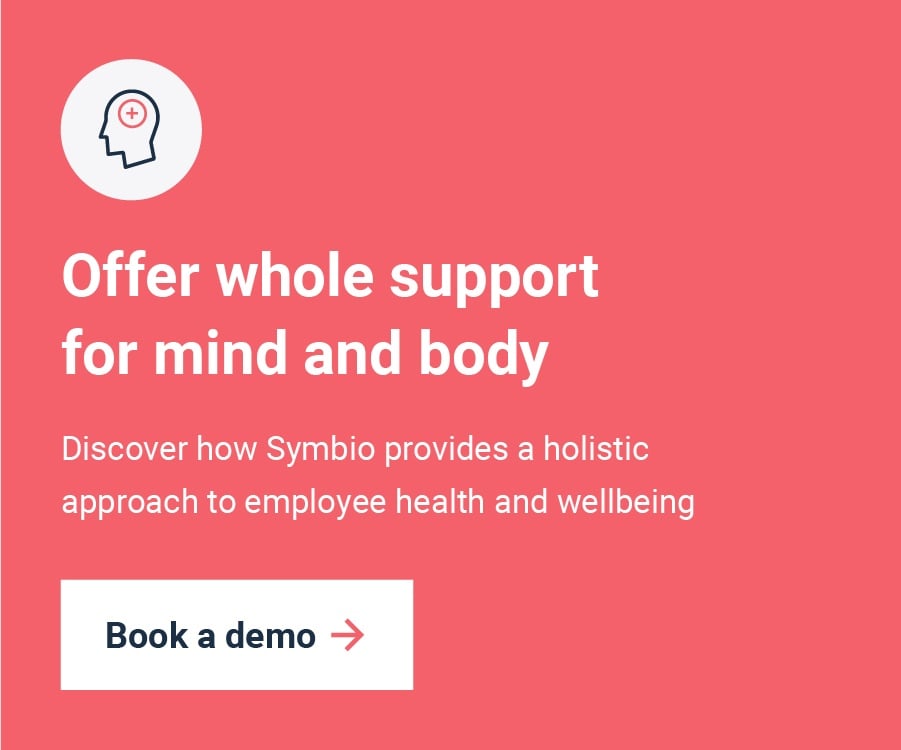In the 1970s, a new word entered our lexicon. Coined by the psychologist Herbert Freudenberger, burnout described the consequences of severe stress and high ideals in ‘helping’ professions. By this, he meant the likes of doctors and nurses who were sacrificing their own self-care in the pursuit of caring for others.
Today, burnout is an all too common affliction. It can affect anyone, across all sectors and industries, with 40 percent of the UK workforce experiencing it. But still, people can confuse it with other conditions, and as such, it’s difficult for employers to identify.
What is burnout?
Burnout is a state of physical and emotional exhaustion. It can occur when an employee experiences chronic stress, or when they work in a physically or emotionally draining role. Burned-out employees feel overwhelmed and are unable to meet the demands of their workplace.
What are the signs of burnout?
When asked to identify the symptoms of burnout, 68 percent of UK adults mistakenly identified anxiety symptoms. And while anxiety is often part and parcel of burnout, there are other less obvious symptoms:
- Detachment
- Cynicism
- Fatigue
- Self-doubt
- Procrastination
- Difficulty concentrating
- Lack of creativity
- Reduced performance and productivity
Employers, however, will likely only be able to spot less than half of these symptoms. When your employees aren’t delivering work to the standard they usually do, it could be an indication of burnout. But since 16 percent of employees admit to ‘putting on a brave face’ about their mental health in the workplace, you might not recognise the other signs.
That’s why prevention is so important. With that in mind, here are four staff wellbeing ideas to help prevent employee burnout.
1. Destigmatise mental health issues
You might have a section on mental health in your employee handbook. You may offer health benefits that address mental health specifically. But unless you openly discuss mental health within your organisation, it’s unlikely that your employees will admit they’re burning out.
You could use Mental Health Awareness Week, for instance, to foster a discussion about the mental health challenges people face. Or you could dedicate a channel on your messaging platform to mental health tips and support. After all, one in four adults in the UK lives with a mental health condition. So let’s be honest about it— it could help encourage an employee to tell you when they feel overwhelmed, so you can give them the help they need.
2. Foster connections
Some employees might get their daily dose of social interaction at the water cooler. But in this new world of remote and hybrid working, not everyone has this outlet. In fact, 67 percent of those working from home say they feel less connected to their colleagues. And this disconnection only gets worse with burnout.
‘People in the throes of work-related exhaustion, self-doubt, and defeatism are more likely to withdraw, interacting less and less, and effectively isolating themselves from the people around them.’ - Jeremy Nobel, MD, MPH
The reciprocal relationship between burnout and loneliness makes them difficult to combat. But there are ways you can prevent both.
- Create a wellbeing channel. Dedicate a channel on your messaging platform to wellbeing so that employees can provide each other with tips and support.
- Hold regular get-togethers. Social gatherings (on-site or virtual) will allow your staff to decompress and talk about something other than work.
- Have an open door policy. Or an open message policy, depending on how you work. Make your staff feel that they can come to you, or someone within your organisation, with any problems. A health and wellbeing app like Symbio will go a step further with counselling from accredited Health Hero specialists.
3. Help your staff create boundaries
An employee on the verge of burnout might have a habit of saying ‘yes’ too much. They might accept even more responsibilities or take on another big project. The reason could be because they feel irreplaceable, or the exact opposite; employees who think their jobs are at risk are more likely to make themselves invaluable. And overstretch themselves as a result.
Holding 1-1s with your employees will give them a forum to express any concerns they have about their roles and workloads. It will also enable you to identify those who say ‘yes’ too often and help them create boundaries.
The Eisenhower Matrix, or the Urgent-Important matrix, is a visual way for employees to prioritise their tasks. It organises workloads into the following: Do first, Schedule, Delegate, Don’t do. Employees will then be able to identify the work that requires their immediate attention. It will also encourage them to say no occasionally.
That said, it’s also up to you as the employer to be vigilant. Something as simple as a shared calendar will allow everyone in your organisation to see an employee’s meeting schedule. There are also project management tools, so that you can see how much work gets assigned to your staff and if they are able to complete it. As a result, you will be able to monitor their progress and provide support if they are struggling.
4. Encourage a good work-life balance
Fifty-one percent of employees work outside their contracted hours to complete work. There’s also the culture of leavism when people will actually use holiday leave to catch up on tasks. But these issues are often hard to recognise, especially with the rise of remote and hybrid working. There are, however, some signs:
- Cancelled time off. Large workloads can make employees feel as if they can’t afford to take time off. And employees with unique skillsets might feel that you can’t do without them.
- Late-night working. A big project might cause your employees to occasionally burn the midnight oil. But if someone is consistently working late to finish tasks, it could be a sign there’s too much on their plate.
- Obvious fatigue. Stress and anxiety can cause insomnia, which in turn can lead to fatigue. This impacts creativity and productivity.
A good work-life balance is crucial in preventing burnout among your employees. As an employer, there are some simple ways you can encourage it.
- Provide learning and development. Train your staff so that there is always more than one person available with the skills needed to complete a task. This means if one employee takes time off, they know there’s someone there to pick up the slack.
- Have frequent check-ins. Regular informal chats will allow you to gauge how your employees are handling their workloads.
- Encourage self-awareness. A holistic health and wellbeing app like Symbio provides each employee with a personalised breakdown of their physical and mental health, lifestyle, and sleep performance. The app also provides employee assistance programs and helplines for those who need support.
Prevent burnout and improve employee wellbeing
Burnout is an affliction that can affect everyone. But even those suffering often don’t see the signs. And this makes it harder for employers to identify.
Our four ideas will help you prevent employee burnout and foster better wellbeing across your organisation. And to ensure that the measures you take work, consider Symbio. Its predictive analytics and HRIS integration mean you gain insights into your efforts and the wellbeing of your employees. So you’ll be able to offer even more support in the long run.
Speak to us today to discover more about how our service can help your workforce.

